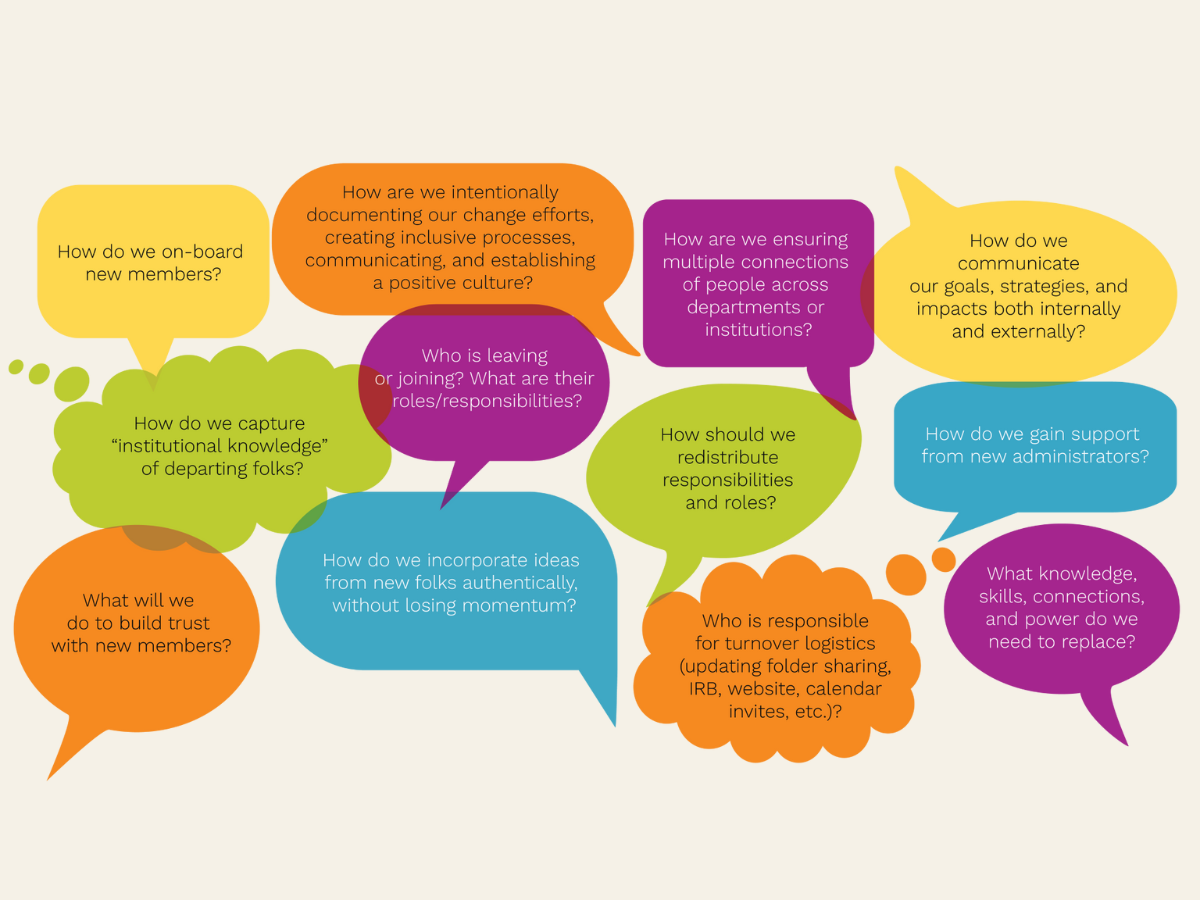
by Diane Barrett, MTEP 2.0 Outreach Hub member
MTEP held its annual NIC Support Workshop (formerly known as the Improvement Science Bootcamp) virtually on June 2 and 3. This workshop brought together existing MTEP 2.0 teams as well as individuals interested in learning more about the work of MTEP. There were 12 teams in attendance, as well as six individuals who were either interested in learning more, wanting to join a new team or wanting to start a new team.
The support workshop took participants through the network improvement process and was differentiated for existing teams and those new to MTEP and network improvement. Following improvement science principles [1], the two-day workshop began with creating a theory of action on Day One, then on Day Two moved into using an inquiry-based approach to continuous improvement and wrapped up with forming a community.
The workshop began with a review of the MTEP 2.0 Primary Drivers and a reminder that transformation is a process [2, 3]. MTEP PI W. Gary Martin welcomed participants to the workshop and covered elements of the network improvement community (NIC) design. MTEP Co-PI Wendy Smith then discussed strategies on handling turnover in an effort to address the fact that 100% of MTEP NICs have experienced turnover (i.e., when change leaders, change team members, and/or administrators turnover, leave, join, or change NICs). MTEP research has shown that NICs handle turnover in different ways with different results, emphasizing the importance of planning for turnover. Effective leadership strategies for sustaining changes through turnover include intentional plans tailored to the culture, documentation, processes, and communication styles of your NIC.
In the next session, participants explored the process of root cause analysis, guided by Alyson Lischka (MTEP 2.0 Co-PI, Research Hub leader, and Middle Tennessee MTEP team leader) and Diane Barrett (MTEP 2.0 Outreach Hub member and MTEP-Hui team leader). This process began by explaining the process and goals of a root cause analysis and exploring some issues that resonated with the participants. In small breakout groups, participants went through the root cause analysis process, keeping in mind that the goal is to drill down deep enough to find specific, manageable targets that can be acted upon. Participants were then provided time to apply this process to their own teams’ root cause analyses.
The final session of Day One, led by Smith and MTEP 2.0 Research Hub member Amy Bennett, built on the root cause analysis work and led the participants to focus on driver diagrams where teams and individuals were able to work from their prioritized root causes, to choosing levers, both broad and finer grained. The teams were then asked to decide upon change strategies, which are the actions that can influence the drivers. Driver diagrams provide an excellent tool to monitor progress that leads to program improvement.
The first session of Day Two focused on the Plan-Do-Study-Act (PDSA) cycles, which is the core framework of improvement science, facilitated by Lischka and Marilyn Strutchens, MTEP Co-PI, Outreach Hub leader, and Central Alabama MTEP team leader. PDSA cycles are processes for rapid cycles of learning from practice; thus, NICs can use them as tools to to consider what they are trying to accomplish, how they will know whether a change is an improvement, and what changes can be made that will result in improvement [1]. PDSA cycles provide a way of testing and revising your theories while keeping the aim of your NIC as the focus. During the session, existing teams were given time to work on their PDSA cycles while new teams were given the opportunity to learn more about PDSA cycles.
The final session of the workshop, led by Martin and Strutchens, focused on team membership and goal-setting with the goal identifying the key stakeholders who can contribute to the work of improvement of the NICs. Teams were asked to identify and consider how they might go about getting the members they need to include in their NIC in order to facilitate improvement. Teams were provided resources and given time to work as a team to set goals for their NIC’s future.
References
- Lewis, C. (2015.) What is improvement science? Do we need it in education? Educational Researcher (44)1, 54-61. https://doi.org/10.3102/0013189X15570388
- Association of Mathematics Teacher Educators. (2017.) Standards for preparing teachers of mathematics. Association of Mathematics Teacher Educators. https://amte.net/standards
- Kezar, A., & Elrod, S. (2016.) Increasing student success in STEM: A guide to systemic institutional change. American Association of Colleges and Universities.